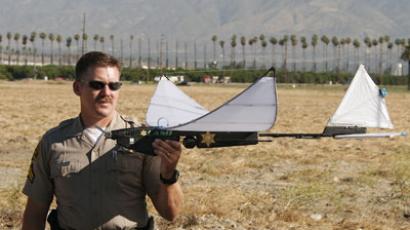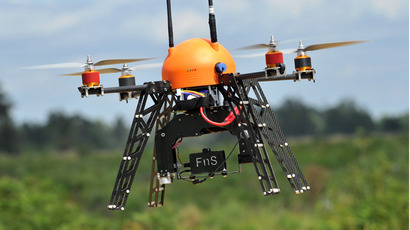Drones over Down Under: Australia to spend $2.7bn on border UAV patrols

Australia has approved plans to buy several Triton drones to patrol the country’s borders at a cost of US$2.7 billion. The government believes the drones can help to prevent illegal immigration.
The fleet of giant, hi-tech drones will be used “to
secure…ocean resources, including energy resources off northern
Australia, and help to protect our borders,” Australia’s
Prime Minister Tony Abbott said, authorizing the move Thursday.
Asylum seekers frequently attempt to enter the country from
Indonesia and Sri Lanka on unsafe boats, which are frequently
turned back or sometimes sink offshore, resulting in dozens of
casualties.
While a primary aim is to monitor these attempts to enter the
country illegally and keep track of energy infrastructure,
regional Asia-Pacific tensions have stoked the need for countries
in the region to monitor commercial maritime interests more
closely.
“They will provide the Australian Defense Force with
unprecedented maritime surveillance capabilities, operating at
altitudes up to 55,000 feet over extremely long ranges while
remaining airborne for up to 33 hours,” Abbott said. The
drones are to be based in Adelaide, southern Australia.
The drones are expected to be used to scan the Indian Ocean – one
of the world’s most essential energy supply channels. The South
and East China Seas are also considered flashpoints which are
thought to require monitoring.
A report released in February confirmed the sum. However, full
details of the quantity and the time elapsed before they are
utilized is yet to be confirmed. The drones are still being
tested by the US Navy.
The Triton Unmanned Aerial Vehicles are still under development
by Northrop Grumman (NOC.N), and have a 40 meter wingspan –
approximately the size of a small airliner. Drones have infa-red
sensors and optical cameras and a wide-ranging 360 degree radar,
which can cover a distance from Sydney to London, according to
Reuters.
Patrol drone use has been debated for some 10 years in Australia.
However, the previous Labor government blocked their
introduction, considering the technology to be too immature.
Abbott outlined his defense policy prior to the September 2013
election, stating his Liberal Party’s support for the
introduction of Triton-type vehicles, saying it would
“closely consider the possibility.”
The defense plan read: “Australia lost its pre-eminent
position in the Triton program and delivery schedule because of
Labor’s ill thought-out decision in 2009 to delay this program to
2022-23. Unmanned aircraft have the speed, technology and
endurance to conduct surveillance over Australia’s vast land and
maritime jurisdictions.”














